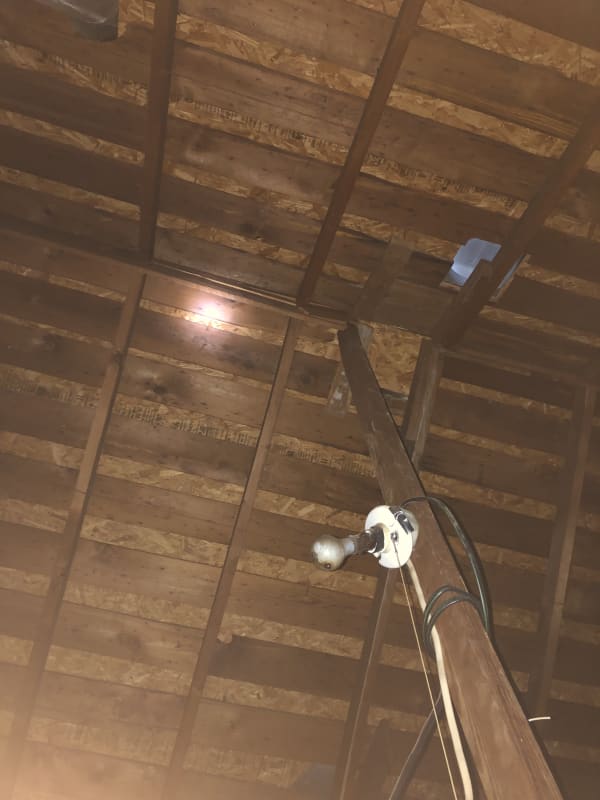Hello!
I’ve been renting this 1 story house right outside Wichita Kansas built in 1910 for a few months now and finally decided to poke my head and flashlight up into the attic. In the attached picture, hopefully you can see that the ridge board is severely split in half down the grain. This occurs right about midpoint of the roof length. The split only seems to extend the distance between two rafters; however, I expect this to only worsen over time. The owners are quite old and like to do things themselves so there are little to no changes to the building regarding structure. So, do you think this is an urgent issue that I should bring to their attention immediately as a structural emergency? Thank you for your input!

I’ve been renting this 1 story house right outside Wichita Kansas built in 1910 for a few months now and finally decided to poke my head and flashlight up into the attic. In the attached picture, hopefully you can see that the ridge board is severely split in half down the grain. This occurs right about midpoint of the roof length. The split only seems to extend the distance between two rafters; however, I expect this to only worsen over time. The owners are quite old and like to do things themselves so there are little to no changes to the building regarding structure. So, do you think this is an urgent issue that I should bring to their attention immediately as a structural emergency? Thank you for your input!


![[bigsmile] [bigsmile] [bigsmile]](/data/assets/smilies/bigsmile.gif) . Agree with others that the split probably isn't a structural concern.
. Agree with others that the split probably isn't a structural concern.